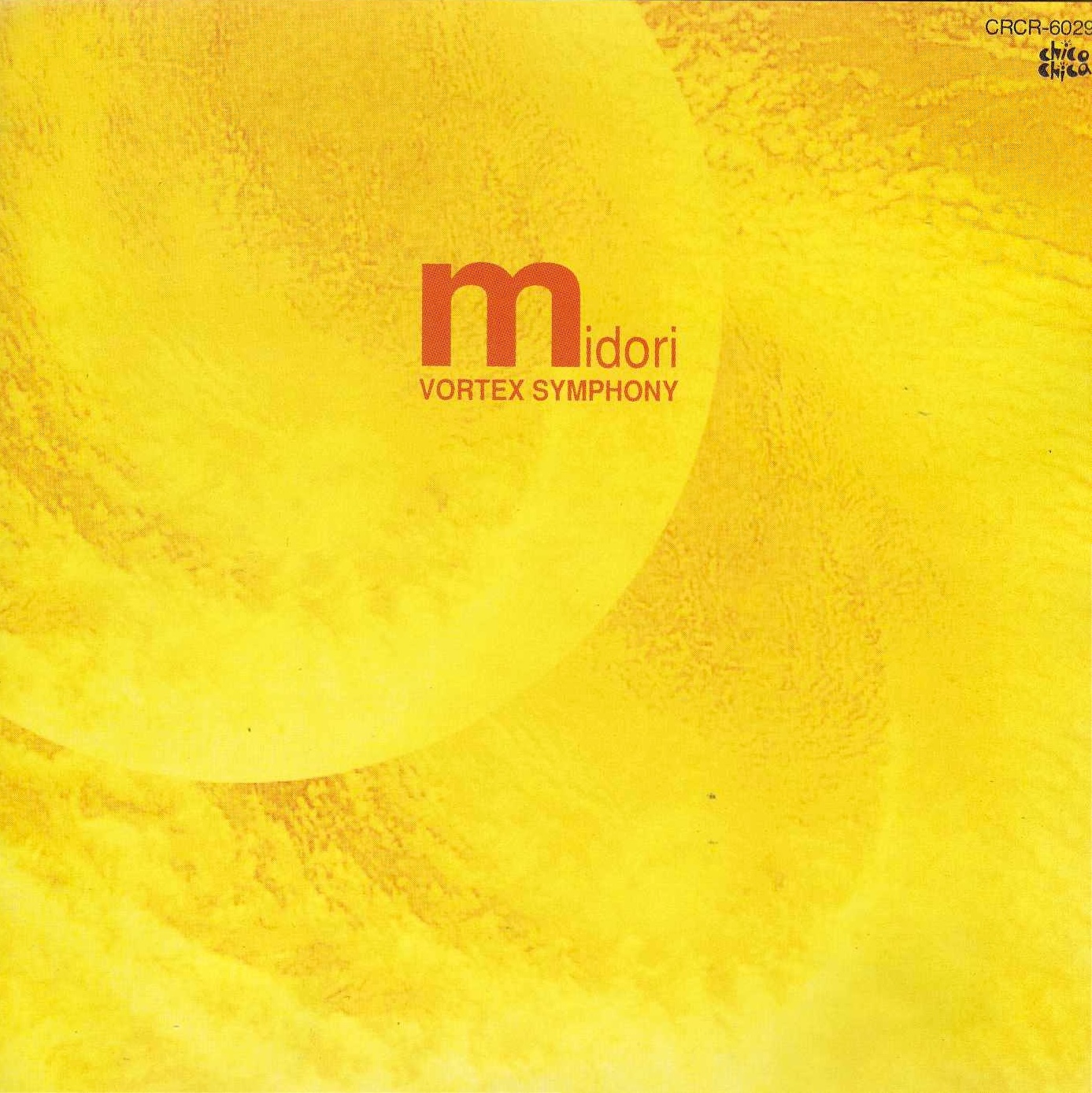One of my favorite things to discover and hear in music is how ideas translate across genres and borders. Listening to Midori’s Vortex Symphony, I get the sense that they share a similar spirit of discovery. Yes, this is “dream pop,” but it isn’t the dream pop we usually imagine – it’s the kind that only Masumi and Yoshiyuki Ito could dream up.
Midori is, for all intents and purposes, the brainchild of singer, songwriter, and composer Masumi Ito from Ibaraki Prefecture in Japan. A gifted performer, she began studying classical piano at age six. However, it wasn’t until she encountered the music of YMO that she realized the kind of experimental, contemporary sound she wanted to create.

In the ’80s, while pursuing a music degree at Tokyo’s Musashino Academia Musicae, Masumi Nitta (then under her maiden name) met and fell for fellow classmate Yoshiyuki Ito, who invited her to join him in forming a post-punk band they’d call イキル (Ikiru). Influenced by bands like Siouxsie and The Banshees and groups like The Wire, their early songs – released on compilation discs – captured their attempts to carve out a niche in the burgeoning Japanese underground rock scene.
Thankfully for us, the duo soon switched gears and began exploring music more suited to their ideas. Inspired by leftfield, artistic pop coming out of England, Masumi shifted her voice from a hard-nosed snarl to a softer, more melismatic phrasing. For the duo, the names Kate Bush, XTC, and the Cocteau Twins carried immense significance. As “Midori,” they brought on board drummer Yukihiro Akiyama and cellist Hiromichi Sakamoto to offer their own take on the emerging dream pop scene.

In 1990, Midori debuted on the Victor Music record label, presenting a fresh perspective on a sound that groups like Zabadak, Mio Fou, and artists like Maria Kawamura had already made their mark with. Yet on Arai, I detect a deliberate attempt to distance themselves from the familiar – or rather, to introduce new ideas that could propel their sound even further.
On tracks like “手紙”, “光の海”, and “Min’ Dance”, Yoshiyuki created soundscapes driven largely by samplers and electronic instruments. Other songs, such as the wonderfully multi-layered “鳥のうた”, hinted at a divergence in creative direction. Although not an indie band per se, Midori’s work on Arai exhibited a more chaotic sound that felt less tied to the ’80s and more forward-thinking, anticipating the contours of a new ’90s alternative pop scene.
Where you can truly sense the inspired turn that Midori would take on the path to Vortex Symphony is in their little-known – but should-be celebrated – rearrangement of KOEI’s ロイヤルブラッド (Royal Blood) video game soundtrack into something altogether different.
Songs like “Leaves” and “Flame” explored how the duo could blend the influences of Ravel, Debussy, and Steve Reich with elements of British, Celtic, reggae, and Asian ethnic music into a cohesive remix. This work demonstrated that the kind of experimentation they had quietly been pursuing on commercials, TV dramas, image albums, and environmental music could also thrive in the album format.

If I could distill Midori’s Vortex Symphony into a few words, they would be: ambient pop. The album title itself tips its hat in that direction. Rather than isolating their ideas from the larger world of music, Vortex Symphony serves as a playground for blending seemingly “foreign” concepts, as they would fo KOEI.
In the first two minutes of Vortex Symphony, Midori creates a floating soundscape driven by intricate vocalese and a minimalist electronic backdrop. “…The Day (…ザ・デイ)” introduces us to the first strains of a new melodic sensibility. Surprisingly, it incorporates ideas gleaned from the broader dance music scene. Over a bed of house-inflected rhythms, Masumi deploys the impressive, multi-layered, chorale-inspired vocals she once toyed with on Royal Blood, reimagining them for a different kind of chillout space.
On the 1992 release Vortex Symphony, you still get Midori’s trademark dreamy pop – as evidenced on tracks like “Door~Drifting Souls (ドア~ドリフティング・ソウルズ)” – but you also encounter trippy, dare I say, funky songs like “宇宙の手” that foreshadow ideas later built upon by groups such as Fishmans. Throughout the, sadly underappreciated, Vortex Symphony, there are missing links that seek to lay to rest their YMO-indebted past and steer indie J-Pop in a new direction.
Atmospheric ambient ballads like “Missing Link” serve as a fitting amuse-bouche to the moody, proto-trip-hop vibes of “Vortex”. And what can be said of environmental pop tracks like “Topsy-Turvy Picnic”? In some parallel timeline, such a track might inspire others to think just outside the box. I mean, just how beautiful is it when these ideas converge so effortlessly on tracks like “Min’Dance”?
Looking back, it’s not hard to see how Masumi and Yoshiyuki (as part of hyym) would take this melodic magic elsewhere. Vortex Symphony is a rare glimpse of art – the kind we’re fortunate enough to stumble upon – that captures both the past and the future. In a sense, it’s everything, everywhere, all at once, much like their later work on 魂の門 ダンテ『神曲』 released later that year would be. As they say, in the end, time waits for no one.
